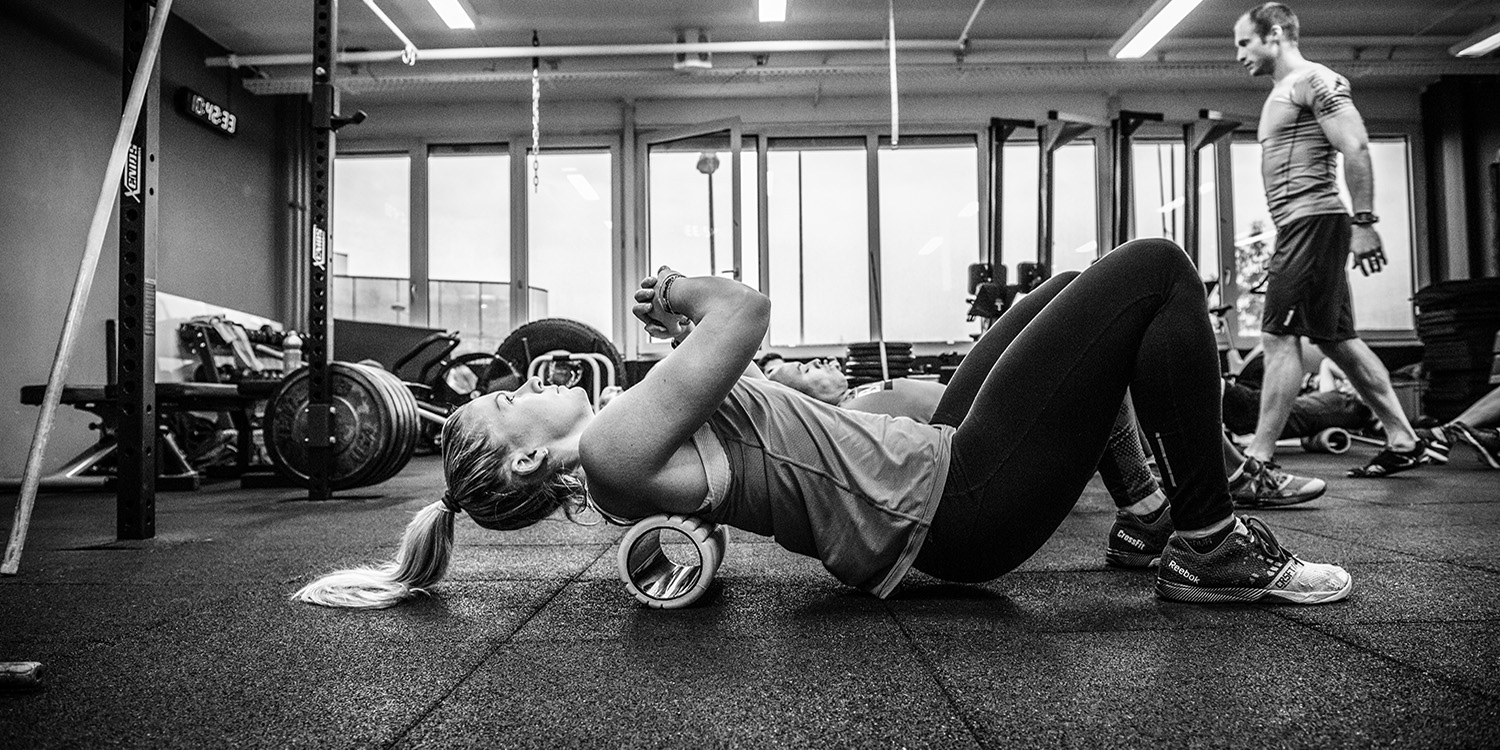Effective recovery methods can elevate your performance, reduce injury risk, enhance your mental state and allow you to train for many years to come. There are many reasons for implementing successful recovery strategies, the above ones merely scratch the surface.
HOW TO MAKE RECOVERY PART OF YOUR PROGRAMME.
Why is it that even when we’re told to do it, we still don’t? Are we really that lazy?
Yes we are and if it doesn’t feel good then why bother. The challenge with all forms of recovery training is that it doesn’t give us that exercise wow feeling and it’s not that fun. For most of us, what makes us tick is that feeling we get when we’re pushing the limits and going flat out. If you’re not that in tune with your body and you can’t feel the differences, then you’re less likely to make active recovery part of your routine. Furthermore, if it’s not easy to do or the training environment your in is not conducive to the recovery programme, then you’re less likely to do it.
Here are some simple strategies to make recovery part of your routine.
Strategy 1.
If you’re in the gym, make sure your recovery programme is built into your training session, so it is done during and after the workout as part of the process. Make sure it’s easy to do and you don’t have to struggle to find space to do it. Using training tools enhances the engagement in recovery training and varying the tools you use to keep it more exciting. Try using different types of foam rollers each time. Switch from a stretching band to mobility stick or use a different cardio machine each time.
Strategy 2.
Come up with methods of testing your improvements. For example if it’s a stretch, test how you’re progressing across a 3 week period. If it’s a mobility or range of motion drill, test how great the increase in range is across a 3 week period. Simple tests can help to re-affirm why you’re doing this and give you purpose behind the recovery programme.
Strategy 3.
Design your recovery routine. If you create a routine that flows nicely from stretch to stretch or mobility drill to mobility drill, it becomes more like a training session than just a few random exercises. You could even get your heart rate up during recovery sessions! Sequencing static stretching with mobility and bodyweight movements is a great way to keep your mentally engaged during recovery sessions.
Strategy 4.
Work on your weaknesses. One of the strongest methods of implementing recovery is to make your sessions about improving weaknesses that will in turn improve your performance. This is a good way to make recovery days a major part of the programme.
 ACTIVE RECOVERY
ACTIVE RECOVERY
Active recovery can be classed as anything done during a session to help the body recover more quickly and be ready for the next bout of exercise. It’s also a common method used on rest days. For this section though, we will just look at the intra-session options.
5 REASONS TO IMPLEMENT ACTIVE RECOVERY.
1. Helps to maintain blood flow and replenish glycogen stores in the working muscles.
2. Helps reduce build up of waste products post exercise.
3. Helps improve performance during exercise.
4. Increases calorie burn during session and makes it more time efficient, if you’re using the training for weight control.
5. Using the correct strategies in active recovery can improve range of motion and motor control in the following exercise.
5 METHODS OF ACTIVE RECOVERY.
1. Low intensity cardiovascular exercise that requires low skill/mental challenge to help replenish energy systems.
2. Self-myofascial release to improve range of motion and movement control.
3. Muscular activation drills to improve movement performance and quality.
4. Skill learning of the movement prior to exercise to enhance quality of movement during work set. This can be effective in track and field, team sports and also strength sessions in the gym.
5. Exciting the Central Nervous System with proprioceptively enriched drills to improve coordination and muscular control.
POST EXERCISE RECOVERY
Post exercise recovery is probably the most popular form used by people. However, it’s not always done effectively and generally athletes won’t spend enough time on it. A few stretches or a jog around the track might do the job, they think.
5 REASONS TO IMPLEMENT POST EXERCISE RECOVERY.
1. Helps to replenish glycogen stores in the working muscles meaning the body is ready to go sooner.
2. Helps reduce build up of waste products post exercise, helping to reduce recovery time after training.
3. Speeds up the recovery process so we are ready to train sooner.
4. Reduces injury risk by maintaining muscular function and reducing tension.
5. Helps to maintain joint balance and range of motion so optimal performance can be achieved.
5 METHODS OF POST EXERCISE RECOVERY.
Like Active Recovery, the methods are quite similar, but when performed in the below order provides a good strategy for post exercise recovery.
1. Low intensity cardiovascular exercise to help replenish energy systems, glygoen stores and flush out waster products.
2. Mobility drills to help take joints back to their full range of motion.
3. Stretching, starting with dynamic and moving into static, to gradually renew muscular length tension relationships and reduce tension brought on from training. Self-myofascial release using foam rollers to improve range of motion and maintain optimal joint function whilst flushing out waste products.
4. Ice baths, cryo therapy and Epsom salts baths are all good methods back up by good research.
5. Nutrition is the final piece to the jigsaw and getting the best possible nutrition to suit your training and performance based diet will speed up recovery processes and have you ready for the next session.
RECOVERY DAY’S
When you’re told to have a day off, what do you do? Do you make the most of it, are you one of those people that needs to be doing something, that just can’t sit still? If you are then doing nothing will probably drive you insane. Having a successful recovery day programme that allows you to improve the weaknesses, reduce post exercise fatigue and speed up recover time will allow you to put more hours into your training each week. Then, if you truly do need a day off find something that takes you away from your sport, but still mentally stimulates you. It could be a walk down the beach, a day out with the family doing something active, coaching your kids something new, taking the dog for a hike. There are all sorts of methods of active recovery that will help you stay sane when your supposed to be resting.
5 REASONS TO IMPLEMENT A RECOVERY DAY PROGRAMME.
1. Maintain a healthy mental state.
2. Aid blood flow to muscles and help flush out waste products.
3. Speed up the recovery process.
4. Learn new skills and broaden your athletic abilities.
5. Reduce the risk of taking it out on your close family and friends when you’re not training!
5 METHODS OPTIONS FOR RECOVERY DAY PROGRAMMES.
1. Find alternative sports that don’t place high levels of stress on the energy systems or muscles used in your sport.
2. Enhance your nutrition. Learn to cook something new that will improve your diet and keep you busy for the day.
3. Find an outdoor activity to do, gardening, hill walking, maybe even fishing! Anything to keep you moving and occupied.
4. Have a long Epsom salts bath.
5. Go for a sports massage or alternative treatment to help release tightness’s.


